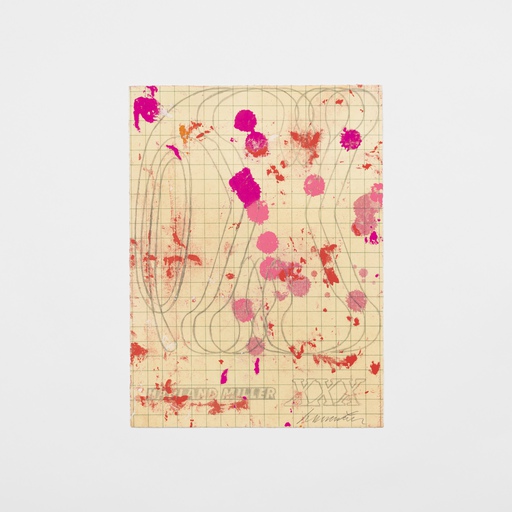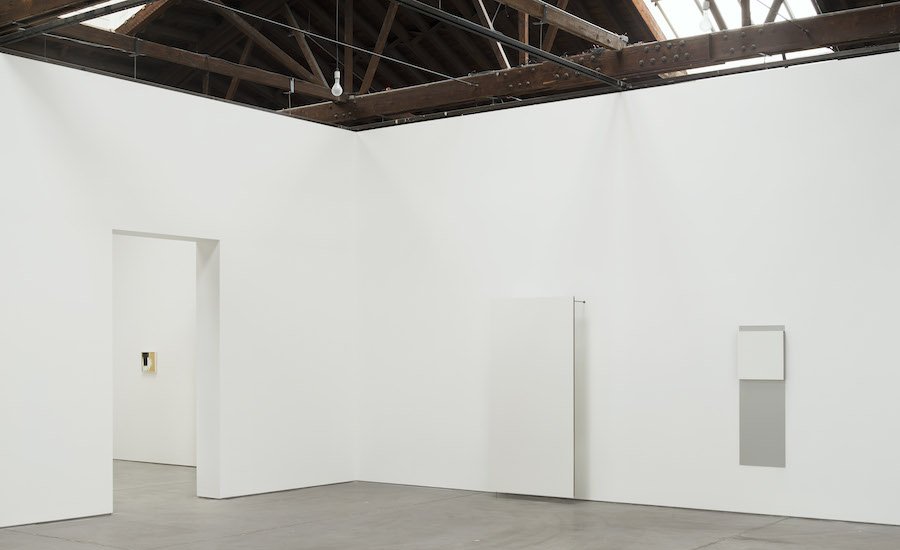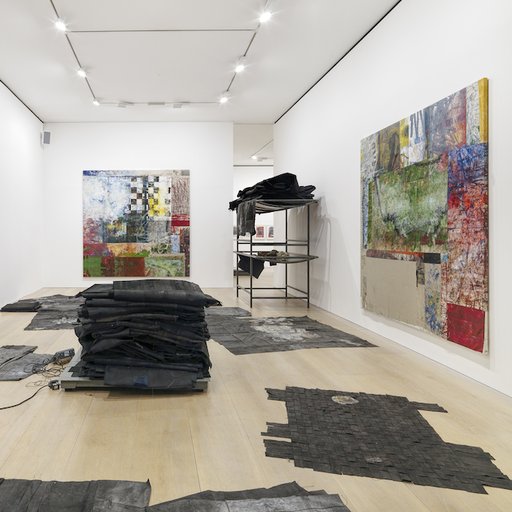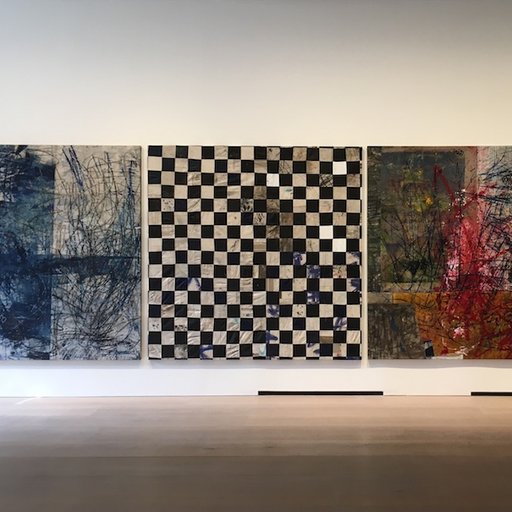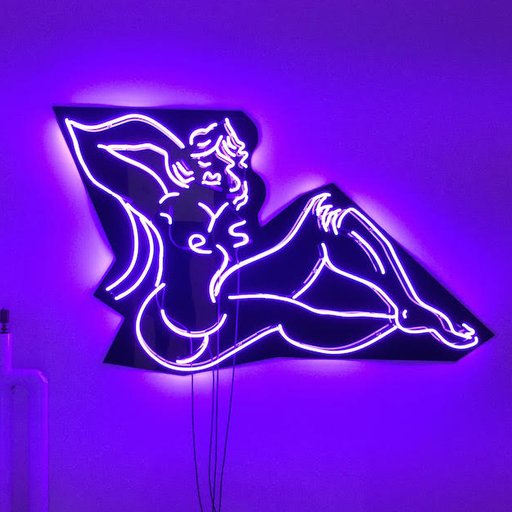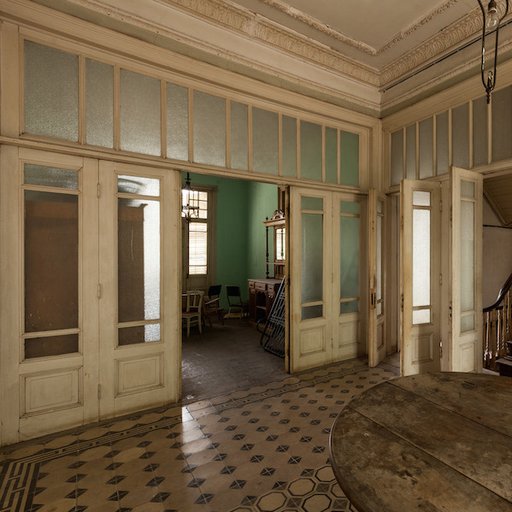Is Robert Ryman, the master of the white-on-white painting for the past half-century or so, a covert “Light and Space” artist? The Dia Art Foundation’s new exhibition in Chelsea, “Robert Ryman: Real Light, 1958-2007,” certainly encourages us to see him this way—as another example of the California-centric, Minimalism-influenced movement that includes James Turrell, Robert Irwin, and Doug Wheeler and that seems to have attained a broader cultural currency in recent years (to the point where there’s now a Turrell homage in a Drake video).
Per the artist’s preference, Dia’s Ryman exhibition—his first in a New York museum since a 1993 MoMA retrospective—is illuminated entirely by daylight. Seeing his nuanced variations on the monochrome under these highly changeable conditions, below skylights veiled in billowing white fabric and dangling light bulbs that remain unlit, gives rise to all sorts of perceptual guessing-games.
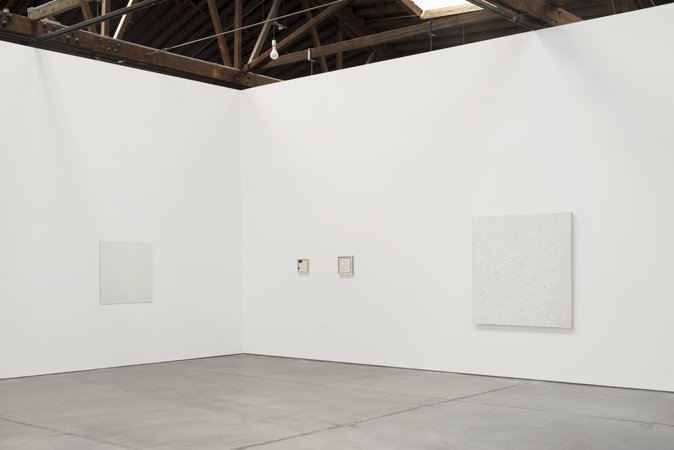
And although the show is billed as a six-decade survey of Ryman’s paintings, its curator, Courtney J. Martin, has made light the focus. She opens her essay with a recent quote from Ryman: “Light is extremely important, how it’s shown on the painting and whether it comes from the front or from the side and whether it’s a soft light or a bright light. It all activates with real light.”
Light may not be the main component of Ryman’s work, as it is in Turrell’s or Wheeler’s, but it’s a crucial ingredient—and one that is incorporated long before the works are installed in a gallery. As Martin explains, “Luminescence is a consideration from the beginning of his process, starting with the kind of paint used and methods of application to specific surfaces.”
That’s abundantly clear in the larger of the show’s two galleries, where thickly-painted early oils on linen mingle with later works made on thin Plexiglas, copper, and brushed aluminum panels. In two pieces from the mid-‘80s, for instance, Ryman attaches skinny aluminum poles to white-coated fiberglass and aluminum rectangles—creating a kind of ethereal relief that’s as much shadow as substance.
Even the most painterly attributes of Ryman’s art—color, for instance, which is present in the backgrounds and on the edges of more than a few works—are presented in terms of light. White, we are reminded, is the sum of colors—and Ryman’s paintings are not white monochromes but rather “achromatic surfaces,” as Martin writes, that “transmit light without separating it into visible colors.”
 Robert Ryman, Untitled #1003, 1960–61. Oil and gesso on unstretched linen canvas. Photo: Bill Jacobson, courtesy the Greenwich Collection, Ltd. © 2015 Robert Ryman /Artists Rights Society (ARS), New York
Robert Ryman, Untitled #1003, 1960–61. Oil and gesso on unstretched linen canvas. Photo: Bill Jacobson, courtesy the Greenwich Collection, Ltd. © 2015 Robert Ryman /Artists Rights Society (ARS), New York
At the same time, Dia’s show confronts you with Ryman’s sheer joy in materials: oil, gesso, enamel, casein, graphite, acrylic, and Elvacite, on supports including Plexiglas, polyethelene, aluminum, and fiberglass. He also embraces fittings and fixtures and installation tools with an intensity typically reserved for art handlers, as in the steel bolts holding Plexiglas to the wall in Arrow, 1976, or the chalk lines surrounding a square of unstretched linen in 1968’s Arista. “A painting begins with materials [and] there are many more materials now available to painters compared to earlier times,” he said in an oft-quoted speech at the Dannheiser foundation in 1991.
This wonkiness could be seen as yet another link between Ryman and the “Light and Space” artists, who were deeply invested in new industrial materials and fabrication technologies. But there’s also something grounding about it. You might call Ryman an artist of “Light and Space and Stuff.”
 Robert Ryman, Arrow, 1976. Oil on sanded Plexiglas panel, four sanded Plexiglas fasteners and hexagonal cadmium plated steel bolts. Photo: Bill Jacobson, courtesy The Greenwich Collection, Ltd. © 2015 Robert Ryman /Artists Rights Society (ARS), New York
Robert Ryman, Arrow, 1976. Oil on sanded Plexiglas panel, four sanded Plexiglas fasteners and hexagonal cadmium plated steel bolts. Photo: Bill Jacobson, courtesy The Greenwich Collection, Ltd. © 2015 Robert Ryman /Artists Rights Society (ARS), New York
To put it another way, in looking at “Robert Ryman: Real Light,” you can’t entirely ignore the “real.” Ryman has called himself a Realist—as Robert Storr has argued, “his paintings insist upon their own reality and that of everything in their proximity.” That’s true even if that reality comes with a sense of contingency; this is a show that will look different each time you visit, depending on the time of day and whether it’s sunny or overcast outside.
Walk into one of Turell’s depth-perception-confounding Ganzfeld pieces, and just as you think you’re wandering into the ether you find yourself with your nose to a wall. The same might be said of the strange phenomenon of looking at Ryman’s paintings, except that the wall comes to seem just as transcendent.

